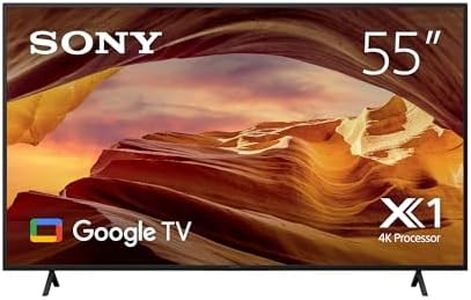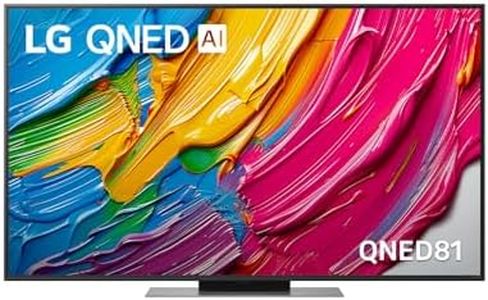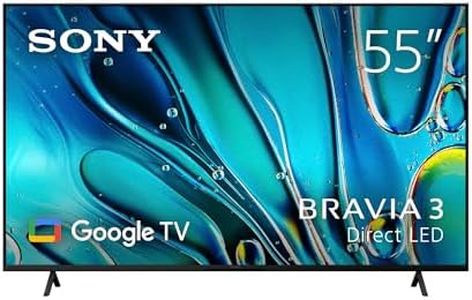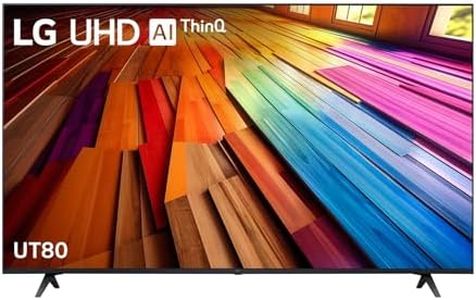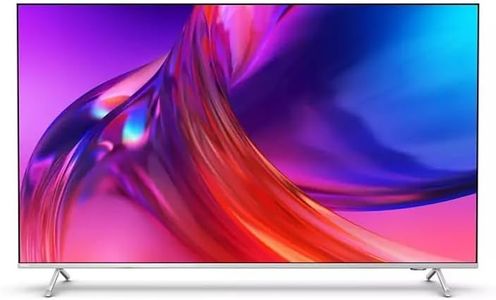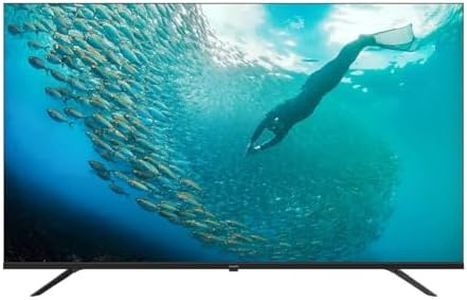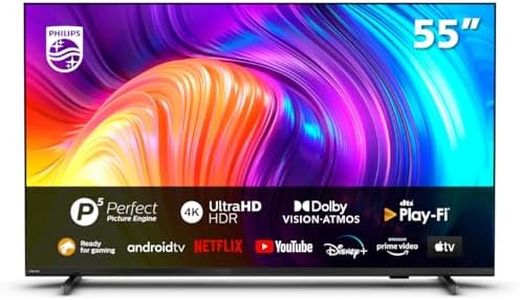We Use CookiesWe use cookies to enhance the security, performance,
functionality and for analytical and promotional activities. By continuing to browse this site you
are agreeing to our privacy policy
10 Best 55 Inch Tvs
From leading brands and best sellers available on the web.Buying Guide for the Best 55 Inch Tvs
Choosing the right 55-inch TV can be exciting but also overwhelming given the many options out there. The key to finding the best fit is understanding how different features impact your viewing experience. Think about where and how you'll use the TV: will it be the main screen for your living room, or is it just for occasional watching in a bedroom? The environment, lighting, and the kind of shows or games you enjoy should influence your decision. By focusing on a few essential specifications, you can narrow down your options and pick a TV that will make you happy for years to come.ResolutionResolution refers to the number of pixels on the screen, which affects how clear and sharp the image appears. The most common resolutions for 55-inch TVs are Full HD (1080p) and 4K Ultra HD (2160p), with some new models offering 8K. At this size, 4K is considered the sweet spot, offering sharp images for most viewing distances. 1080p may suffice in secondary rooms or if you watch mostly older content, while 8K is generally more than most people need as content for it is limited. Choose based on how close you'll sit to the screen and what you like to watch.
Panel Type (LED vs. OLED vs. QLED)Panel type determines how the TV produces light and color. LED TVs are the most common and generally affordable, offering good brightness and energy efficiency. QLED TVs, an improved LED variety, boost color and brightness for vivid picture quality, making them great in bright rooms. OLED TVs are known for deep blacks and vibrant colors, ideal if you often watch in dim lighting or want the best movie experience. If your focus is on sports or general TV in a well-lit room, LED or QLED can be sufficient; for home theaters or critical viewing, OLED stands out.
Refresh RateRefresh rate tells you how many times per second the TV updates the picture, usually given as 60Hz or 120Hz. Higher refresh rates help smooth out fast motion, reducing blur during sports, action movies, or gaming. 60Hz TVs are standard and fine for everyday viewing, while 120Hz units are better suited for those who notice or care about motion clarity. Gamers and sports fans should pay attention to this spec, but for casual movie watching, 60Hz is often enough.
Smart FeaturesSmart features refer to the TV's ability to connect to the internet and run apps like Netflix, YouTube, or streaming music. Almost all current 55-inch TVs are smart, but platforms vary in app selection and ease of use. If you love streaming or want voice assistants, look for a robust, user-friendly smart system. For non-tech-savvy users or those with external streaming boxes, any basic smart platform will suffice.
Connectivity (HDMI, USB, etc.)Connectivity covers the ports and options the TV offers for plugging in devices like game consoles, sound systems, or USB drives. More HDMI ports mean you can connect more devices without switching cables. Look for at least three HDMI ports for flexibility. If you use soundbars or headphones, make sure the audio connections (like optical or Bluetooth) fit your needs. Think about everything you might connect now and in the future, so you're not limited.
HDR SupportHDR (High Dynamic Range) allows TVs to show brighter highlights, deeper blacks, and more vivid colors, making movies and shows look more realistic. Most 4K TVs include some form of HDR, but the quality can range from basic HDR10 to more advanced formats like Dolby Vision. Even basic HDR is a step up from TVs without it, but if you're a movie buff or want the best picture, look for TVs supporting advanced HDR formats. For casual use, standard HDR is sufficient.
Viewing AngleViewing angle describes how well the picture quality holds up when you're not sitting directly in front of the TV. Some TVs look washed out or lose color when viewed from the side, which can be important for wide seating arrangements. OLED TVs typically have better viewing angles, while some LED types drop off more quickly. If your room has seating far to the sides, give this spec more attention; if everyone sits directly in front, it's less critical.
